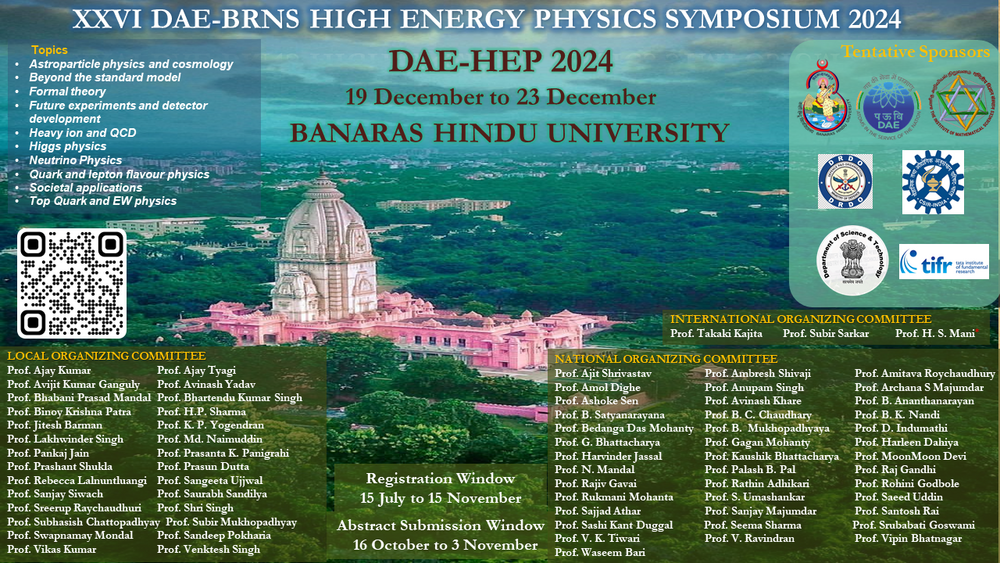Speaker
Description
The electron-Ion Collider is designed to scan internal structure of particles like neutron and protons. It is aimed to study some of the important questions in the particle physics for example how quark and gluon contributes to proton spin, mapping quarks and gluons distribution and movements within protons, etc. One of the key challenges at EIC is particle identification (PID), which requires excellent separation of kaon, pions and protons.
Time of Flight is one of the detector which along with Cherenkov detectors is designed to give excellent PID over wide range of momentum for the ePIC detector and also help in 4-D (x, y, z, t) reconstruction of the events. ToF detector has two integral sub detectors Barrel TOF (BTOF) and Forward TOF (FToF) with a timing resolution of 35 ps and 25 ps respectively. ToF is going to use AC-LGAD sensors for the both Barrel and Forward sub detectors which enables identification of charged particles for example pions and kaons in low momentum range at the 3$\sigma$ level. There are challenges for example radiation hardness of sensors, achieving good timing resolution, cooling of detector during operation, etc. To understand various challenges that can come across while building and running the detector, currently simulations are being done using DD4HEP (GEANT4) and PYTHIA., which includes studying background, expected frequency of the events in detector, also challenges in design of detector along with the study of AC-LGAD sensors. Simulations are also being done to digitise the events information by converting energy deposition into ADC and TDC and incorporating noise in the detector simulations. In this presentation the current status of simulation and sensor study for the Time Of Flight detector will be presented. And also various aspect and challenges for ToF detector will be discussed.
| Field of contribution | Experiment |
|---|

